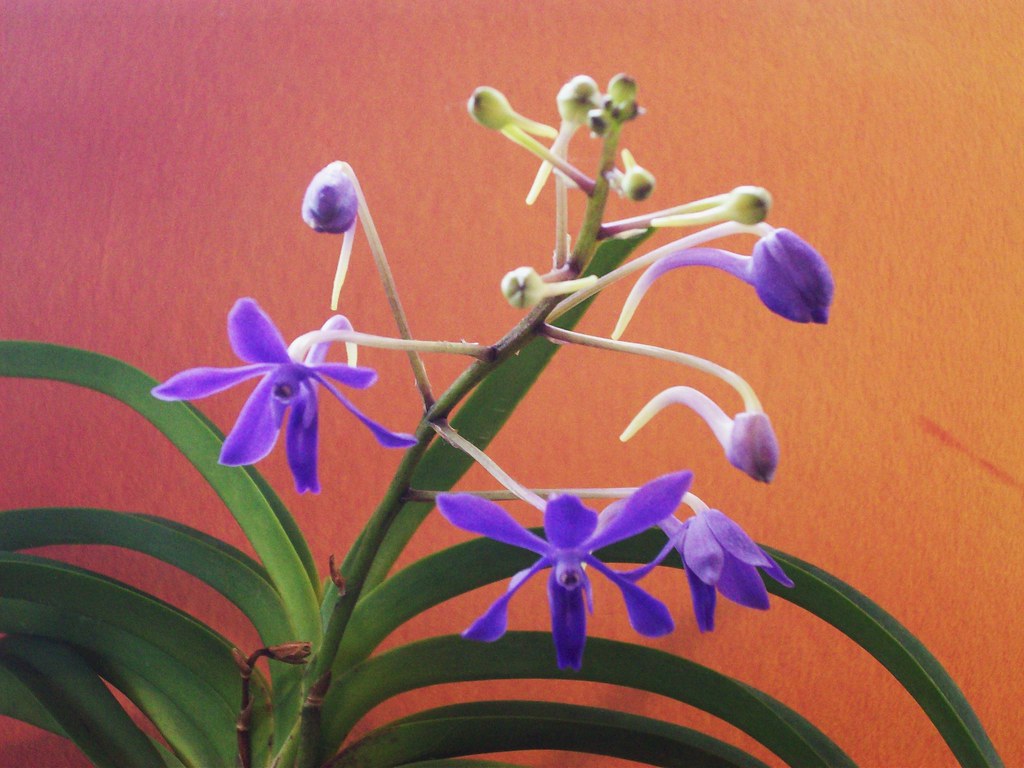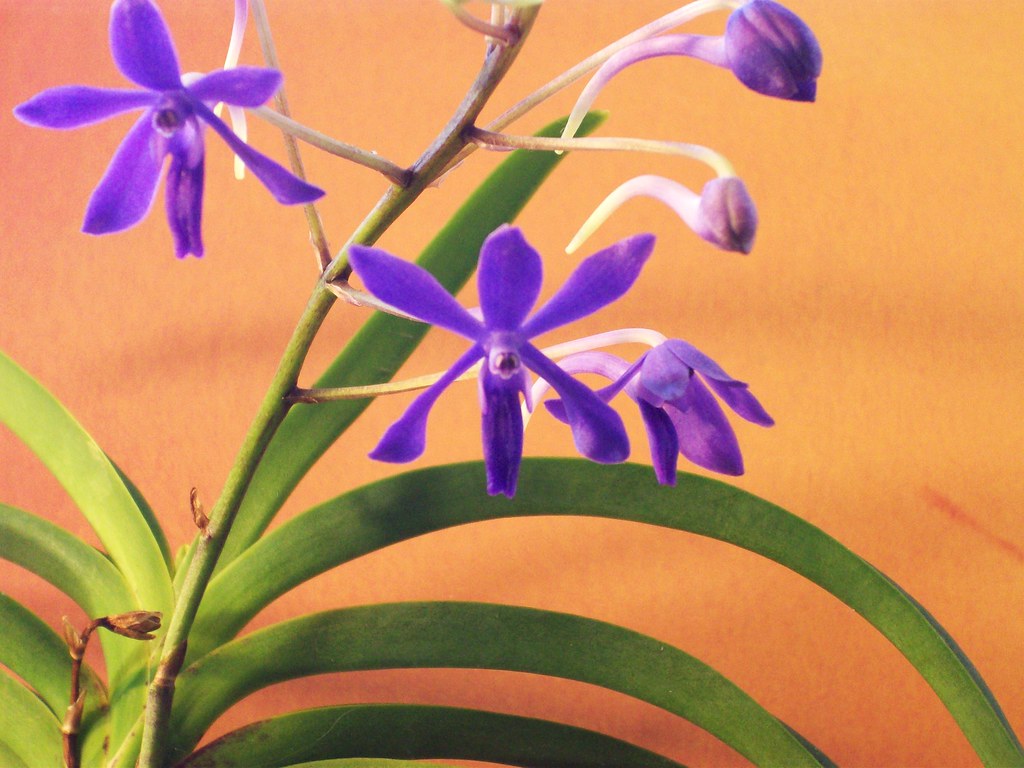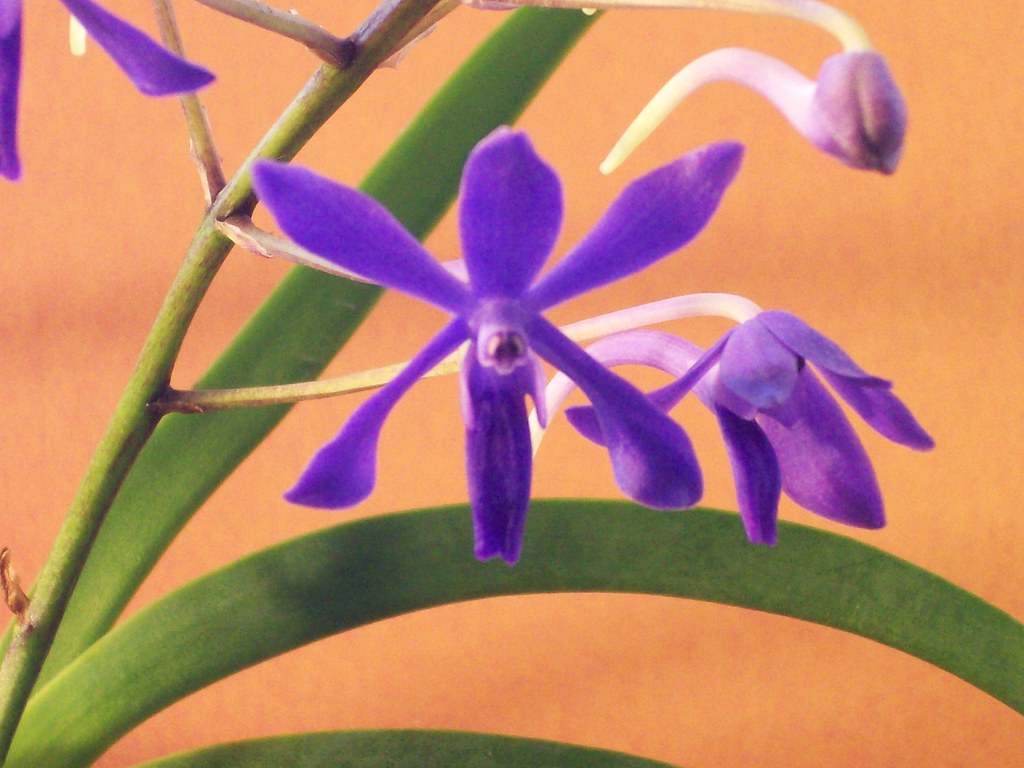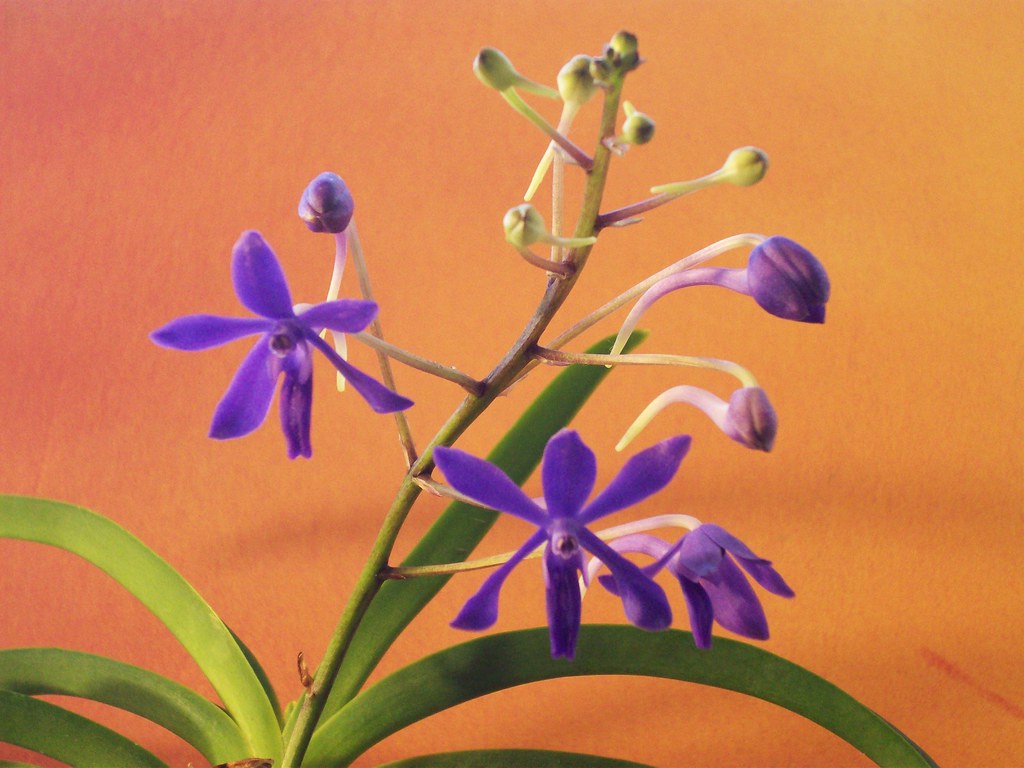This should be right up your alley Kortney! I told you I have some good things in store for you! My Neostylis "Lou Sneary" has finally bloomed! I think I've had it for three or four years now and this is the first time it's bloomed. Yes, I'm a terrible grower! Hopefully it will bloom every year now. Also, there isn't a fragrance yet either? I wonder why? I would expect this orchid to be a highly fragrant as both parents in this intergeneric hybrid are fragrant. Neofinetia falcata is famous for being highly fragrant. I'll go out on a limb and say that Rhynchostylis coelestis is too! I have two other Rhynchostylis species R. gigantea & R. retusa and they both smell heavenly! I will post more photos and an update when it blooms out. Enjoy!




Family: Orchidaceae •
Genus: Neofinetia x Rhynchostylis •
Species: N. falcata x R. coelestis •
Country of Origin: N/A •
Common Names: Neostylis "Lou Sneary"
Neostylis "Lou Sneary" by Eric Bronson is licensed under a Creative Commons Attribution-Noncommercial-No Derivative Works 3.0 United States License.
Based on a work at www.flickr.com
Friday, December 5, 2008
Neostylis "Lou Sneary"
Posted by Eric Bronson at 11:38 AM 2 comments
Labels: orchidaceae, orchids
Monday, December 1, 2008
Orchid Seed Capsule
I did a post on this Dendrobium orchid in September that you can see here
http://ilikerareplants.blogspot.com/2008/09/dendrobium-bigibbum-compactum-hybrid.html
I found an unusual find, there is a seed capsule, it must have been pollinated by an ant or a gnat. I'm not quite sure. I find it odd since this plant is indoors. There isn't much I can do with the capsule as I don't own a laboratory. There is a lot of science involved which is better explained by an expert. I know Wikipedia is imperfect sometimes but this information is accurate enough to give you an idea of how this complex process works. I made a few minor edits.
The seeds are generally almost microscopic and very numerous, in some species over a million per capsule. After ripening they blow off like dust particles or spores. They lack endosperm and must enter symbiotic relationship with various mycorrhizal basidiomyceteous fungi that provide them the necessary nutrients to germinate, so that all orchid species are mycoheterotrophic during germination and reliant upon fungi to complete their lifecycle. As the chance for a seed to meet a fitting fungus is very small, only a minute fraction of all the seeds released grow into an adult plant. In cultivation, germination typically takes weeks, while there is a report of one paphiopedilum that took fifteen years.
Horticultural techniques have been devised for germinating seeds on a nutrient-containing gel, eliminating the requirement of the fungus for germination, greatly aiding the propagation of ornamental orchids. The main component for the sowing of orchids in artificial conditions is the agar. The substance is put together with some type of carbohydrate (actually, some kind of glucose) which provides qualitative organic feed. Such substance may be banana, pineapple, peach or even tomato puree or coconut milk. After the cooking of the agar (it has to be cooked in sterile conditions) the mix is poured into test tubes or jars where the substance begins to jelly. The seeds have to be put in the dish above boiling water, in the steam because that secures sterile conditions. The test tubes are put diagonally after that.
from wikipedia http://en.wikipedia.org/wiki/Orchid
The seed capsule is at the rear far left.



Orchid Seed Pod by Eric Bronson is licensed under a Creative Commons Attribution-Noncommercial-No Derivative Works 3.0 United States License.
Based on a work at www.flickr.com
Posted by Eric Bronson at 9:09 AM 2 comments
Labels: orchidaceae, orchids

